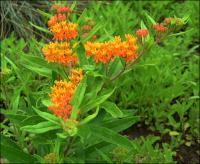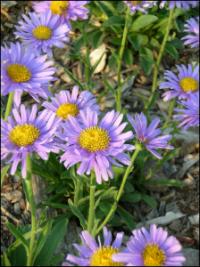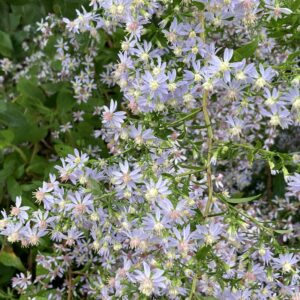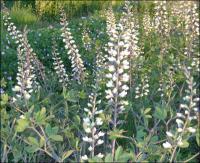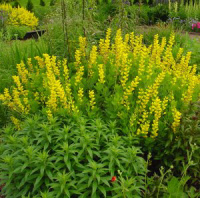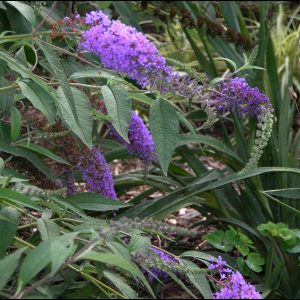Drought, Xeric & Dry Soil Plants
Showing 17–24 of 132 results
-
Asclepias tuberosa Butterfly weed, Pleurisy-root Z 4-9
Gorgeous - July - September bright orange cymes
OUT OF STOCK
Gorgeous – July – September bright orange cymes
Size: 2-3' x 12"
Care: Sun in moist well-drained to dry soil
Native: East and south North America, Wisconsin native
Wildlife Value: Host for Monarch caterpillars and its nectar is a favorite for 13 different butterflies: 4 Swallowtails, 2 Fritillaries, Checkered white, Spring azure, Small copper, Sachem, Monarch, and Coral and Gray hairstreaks. Attracts Ladybugs that eat many insect pests.
Awards: Great Plants for Great Plains; Perennial Plant Assn. Plant of the Year 2017.Named after Asclepias, a Greek god of medicine. Omaha Indians ate the raw root to cure bronchial and pulmonary ailments, their Shell Society was the authorized guardian of the plant, taking 4 days to dig, prepare and distribute the root. Most important medicine for Menominee Indians. The Iroquois smashed roots on legs to impart strength to runners. Navajo cured coyote bites and flu with Butterfly weed. Millspaugh said used as “subtonic, diaphoretic, alternative, expectorant, diuretic, laxative, escharotic, carminative, anti-spasmodic, anti-pleuritic, stomachic, astringent, anti-rheumatic, anti-syphilitic and what not?” 1st collected by Rev. John Banister in colonial Virginia c. 1680. A gunman mistakenly shot and killed him while he collected plants. Used by natives for Bloody Flux; the Root must be powdered and given in a Spoonful of Rum, or rather as the Indians give it, bruise the Root, and boil it in Water, and drink the Decoction: Pehr Kalm saith it is excellent for the hysteric Passion.” HoChunk placed masticated root into wounds. Cultivated by Jefferson. Pressed specimen in Emily Dickinson’s herbarium.
-
Aster alpinus Alpine Aster Z 5-7
Frilly little daisies, May-June, lavender, pink or white
Frilly little daisies, May-June, lavender, pink or white. Plant where they’ll be seen in the front of the garden. Also good in rock gardens
Size: 6-10" x 18"
Care: Full sun well-drained soil. Drought tolerant & tolerant of Black walnut toxins
Native: Rockies
Wildlife Value: attract butterfliesAster means star referring to the flower form. Collected by Drummond in the Rockies by 1800.
-
Aster cordifolius syn. Symphyotrichum cordifolium Blue wood aster Z 3-8
Heart-shaped foliage smothered with blue daisies from late summer into fall, perfect companion for anemones.
Heart-shaped foliage smothered with blue daisies from late summer into fall, perfect companion for anemones.
Size: 2-3' x 2-3'
Care: Sun to full shade in moist well-drained to dry soil
Native: Canada to Florida, west to Oklahoma, Wisconsin native
Wildlife Value: Aster species are nectar sources for many butterflies – Checkered white and Checkered skippers, Spring azure, Pearl crescent, Buckeye, Painted lady, Fiery skipper, Sachem, Sleepy orange, Silver-spotted skipper and Monarch.Winnebago used this in the sweat bath. 1st described by Jacques Philippe Cornut in 1635. Likely collected and transported to France by Samuel de Champlain (1567-1635.) founder of Quebec who traveled from France to “New France” at least 21 times. Grown in Jardin du Roi in Paris.
-
Aurinia saxitilis syn. Alyssum saxatile Basket of Gold Z 4-7
Taxi cab yellow rounded, dense mass of flowers envelops the plant from May to June
Taxi cab yellow rounded, dense mass of flowers envelops the plant from May to June
Size: 10" x 12"
Care: Full sun well-drained soil, cut back after flowering to maintain compact form. Drought tolerant
Native: Central and southeastern Europe
Awards: England's Royal Horticultural Society Award of Garden MeritAncient Greeks may have used this to cure hydrophobia. English garden cultivation since 1710. Grown by Washington at Mount Vernon.
-
Baptisia australis syn. Saphora australis False Indigo Z 3-9
Indigo blue racemes in June followed by ornamental black seed pods on this perennial that looks like a shrub. This is a legume that improves soil fertility by making nitrogen available to the Baptisa and surrounding plants. Internationally known garden designer Piet Oudolf’s 100 “MUST HAVE” plants, Gardens Illustrated 94 (2013).
Indigo blue racemes in June followed by ornamental black seed pods on this perennial that looks like a shrub. This is a legume that improves soil fertility by making nitrogen available to the Baptisa and surrounding plants. Internationally known garden designer Piet Oudolf’s 100 “MUST HAVE” plants, Gardens Illustrated 94 (2013).
Size: 3' x 3'
Care: Full sun sandy soil. Heat and drought tolerant, with no staking needed.
Native: Eastern United States, Wisconsin native.
Wildlife Value: Food source for several caterpillars and nectar for a number of butterflies.
Awards: Received England’s Royal Horticultural Society Award of Merit. Perennial Plant Association Plant of the Year Award, 2010. Missouri Botanic Garden Plant of MeritBaptisia is Greek meaning to dye referring to use of the plant as a substitute for indigo dye. Cherokee used Baptisia australis for a number of illnesses: cease mortification, cure toothaches and induce vomiting. Collected by John Bartram (1699-1777) plant explorer and colonial nurseryman by 1748.
-
Baptisia leucantha syn. Baptisia lacteata, Baptisia alba White Wild Indigo, Prairie wild indigo Z 3-9
Gorgeous, tall creamy white flower spikes in May & June followed by black seed pods. This is a legume that improves soil fertility by making nitrogen available to the Baptisia and surrounding plants.
OUT OF STOCK
Gorgeous, tall creamy white flower spikes in May & June followed by black seed pods. This is a legume that improves soil fertility by making nitrogen available to the Baptisia and surrounding plants.
Size: 3-5' x 2-3'
Care: full sun to part shade in rich well-drained soil. Drought tolerant.
Native: Wisconsin native – from Minnesota to Texas.
Wildlife Value: food source for several caterpillars and nectar and pollen for a number of butterflies and bees. Deer resistant.Winnebago (HoChunk) mashed cooked root to make a poultice applied to remedy inflammation of the womb. Meskwaki applied root to cure old sores and, made a compound to remedy wounds from a rattlesnake bite, knife or ax, an infusion to remedy dropsy, Leucantha means white flowered.
-
Baptisia sphaerocarpa Yellow wild indigo Z 5-8
Spikes of yellow pea-like flowers in spring cover this broad plant - really makes you say “awe” or “oooh” when it blooms. All season resembles a shrub Flowers turn into round seed pods the size of a marble. This is a legume that improves soil fertility by making nitrogen available to the Baptisa and surrounding plants.
Spikes of yellow pea-like flowers in spring cover this broad plant – really makes you say “awe” or “oooh” when it blooms. All season resembles a shrub Flowers turn into round seed pods the size of a marble. This is a legume that improves soil fertility by making nitrogen available to the Baptisa and surrounding plants.
Size: 3’ x 3’
Care: sun to part shade in moist well-drained to dry soil. Drought tolerant.
Native: Missouri to Mississippi to TX
Wildlife Value: food source for several caterpillars and nectar and pollen for a number of butterflies and bees pollen. Deer resistant
Awards: Missouri Botanic Garden Plant of Merit.Baptisia is Greek meaning “to dye” referring to use of Baptisia australis as a substitute for indigo dye. Sphaerocarpa means “round seed.” Collected before 1834 by Thomas Nuttall (1786-1859) English planthunter who scoured the US from the Atlantic to the Pacific.
-
Buddleja davidii Butterfly bush, Summer lilac, do ye zui cao in China Z 5-9
Fragrant, large, lilac to purple arching spikes from mid-summer through fall
Fragrant, large, lilac to purple arching spikes from mid-summer through fall
Can not ship to: Delaware, Maryland, North Carolina, Oregon, Pennsylvania, Tennessee and Washington
Size: 6' x 4'
Care: Sun in well-drained soil.
Native: Sichuan & Hubei provinces, China
Wildlife Value: flowers very fragrant, attracts many butterflies, excellent cut flower
Awards: Royal Horticultural Society Award of Garden Merit.Buddleja named to honor Reverend Adam Buddle, Vicar of Farmbridge in Essex and botanist. (1662-1715) Davidii honors Fr. Armand David a French missionary who noticed it. Introduced to gardens by another French missionary Jean Soulie (1858-1905). Soulie made dangerous expeditions to the Tibetan border of China and ultimately lost his life when he was tortured and shot in 1905. This species 1st sent to the West (Kew Gardens) by Dr. Ernest Henry who found it near Ichang in 1887. Irishman Dr. Henry worked as a customs officer in Shanghai and an assistant physician in Ichang.

